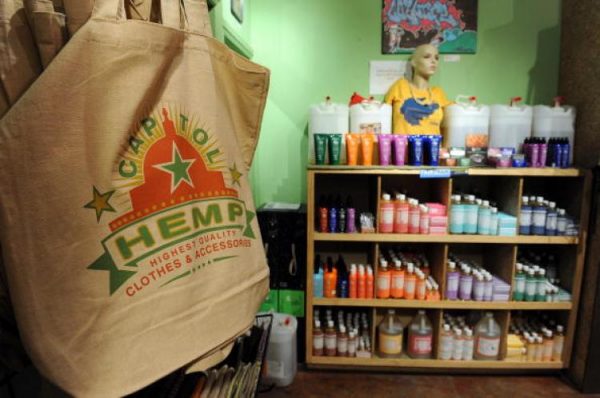[ad_1]
The usage of hemp for industrial functions – equivalent to grain and fiber – has been the following large factor because the passage of the agriculture invoice that legalized manufacturing in 2018.
Since then, a parallel market has sprung up alongside the cannabinoid business.
Unbridled optimism was excessive at first, which triggered a moonlight planting in 2019.
4 years later, seasoned farmers and enterprise capitalists alike are battling a saturated market and gross sales exceeding expectations at each ends of the business.
Traditionally, advocates have enthusiastically marketed hashish as a miracle crop. As soon as cannabidiol (CBD) gained a repute for having medicinal advantages, which started in California in 1996, the motion gained severe traction as an funding inside the USA.
As soon as the USA Division of Agriculture (USDA) accredited a invoice to legalize hemp as an agricultural commodity, it was adopted by industrial functions, eradicating the plant’s lengthy tarnished standing.
In 2019, only a yr after legalization, there have been 511,442 acres of licensed hashish crops nationwide. Nonetheless, by 2021 this quantity has come down to simply 107,702 acres.
This yr, the world below licensed hemp fell one other 53 %.
Some consultants partly attribute this to a blow from the availability exceeding the wildly demanding begin firstly of the sport.

“There have been a number of farmers who bought concerned in hashish in 2019—there was extra manufacturing that yr, and a number of farmers had been left with little in the way in which of huge payments and returns,” says Mike Lego, founding father of iHempx, the informed the Epoch Instances.
As CEO of a world hemp alternate, LEGO has labored within the hemp provide chain since 2016.
He says that many “dishonest and malicious unhealthy actors” inside the business have thrown a wrench within the rising market. A few of this was carried out by way of unrealistic spreadsheet forecasts, resulting in the funding gold rush.
“Oversupply turned a actuality,” he stated.
Because of persistent market overcrowding in 2021, some Oregon growers had been caught with hundreds of kilos of hashish harvested and piled inside their barns. Until July, many couldn’t promote their crop on the break-even worth.
It is a state of affairs that has turn into all too acquainted amongst hashish farmers: a money crop that is not making any money. As well as, Southwestern US producers are going through further challenges, equivalent to extreme drought situations.
In Texas, hashish fanatics tout the crop as a drought-resistant, financial lifesaver. Nonetheless since 2019, farmers are but to get any return on their funding.
Kyle Bingham, president of the Texas Hemp Growers Affiliation, informed reporters this yr “there isn’t any curiosity with farmers”. He stated growers do not need to waste time, cash, land or the rest on hashish at this time limit.
A few of this unsatisfying sentiment is because of a marked underperformance amid widespread droughts, which have affected 61 % of the continental United States this yr.
Water issues are paramount within the notoriously arid Lone Star state, the place farmers can’t afford to waste a drop of water on crops that, just about, can’t tolerate the warmth.
And regardless of hashish road’s repute as drought-resistant, little analysis exists to assist this.
In distinction, a Colorado water research on the drought tolerance of hemp led by Katie Russell at Colorado State College famous that hemp just isn’t a super “dry land crop.”
“To be clear, hemp is a plant, and excessive climate situations are laborious on crops,” Nathan Murphy, director of the hemp fiber division and carbon offsets for the World Good Commodities Group, informed The Epoch Instances.
Murphy pressured that misplaced expectations and poor long-term strategic planning account for a big portion of the early failures inside the hashish business. He additionally agrees with LEGO’s evaluation that self-proclaimed consultants sabotaged the rising market.
“I hear them known as hashish prophets, making overly optimistic guarantees about capitalizing on the ‘inexperienced rush’ for weak farmers, in fact, for a charge,” They stated.

On prime of that, Murphy says that once you add an “uneducated producer base,” cumbersome rules, and a very underdeveloped worth chain, it creates a “excellent recipe for catastrophe.”
Farmers in states like Maine, Arkansas, Tennessee and Washington are additionally feeling the non-green impression of hundreds of {dollars} in damages on hashish crops.
Drop in costs apart, repressive regulation and excessive taxes are among the many fundamental complaints of most producers.
The USDA introduced on Could 16 that hashish farmers who misplaced crops throughout pure disasters in 2020 and 2021 are eligible for aid funds. Whereas it is a breath of recent air for struggling growers, it has carried out little to stem the migration to extra secure, dependable crops.
Relating to bulk hashish provide — which incorporates well-liked gadgets like CBD oil — LEGO stated over-saturation has had a major impression on pricing since 2019 and has saved it low since then.
However he stated there could also be hope on the horizon for non-cannabinoid hemp.
“On the true industrial aspect of the plant, we’re seeing a number of momentum, and the value will increase have began.”
And whereas some insiders are saying the business is prone to rebound after a couple of years of rising pains, Murphy believes it is essential to place expectations in the best context.
“Is hemp manufacturing changing 100 per cent paper or plastic manufacturing? No, it’s not,” he stated.
“These are unreasonable expectations. Can industrial hemp change ‘some’ of manufacturing for paper, plastics, biodiesel, human meals, textiles, animal feed, constructing supplies and different industries? Sure, it will probably, and lengthy In time, it in all probability will.”
[ad_2]
Supply hyperlink
